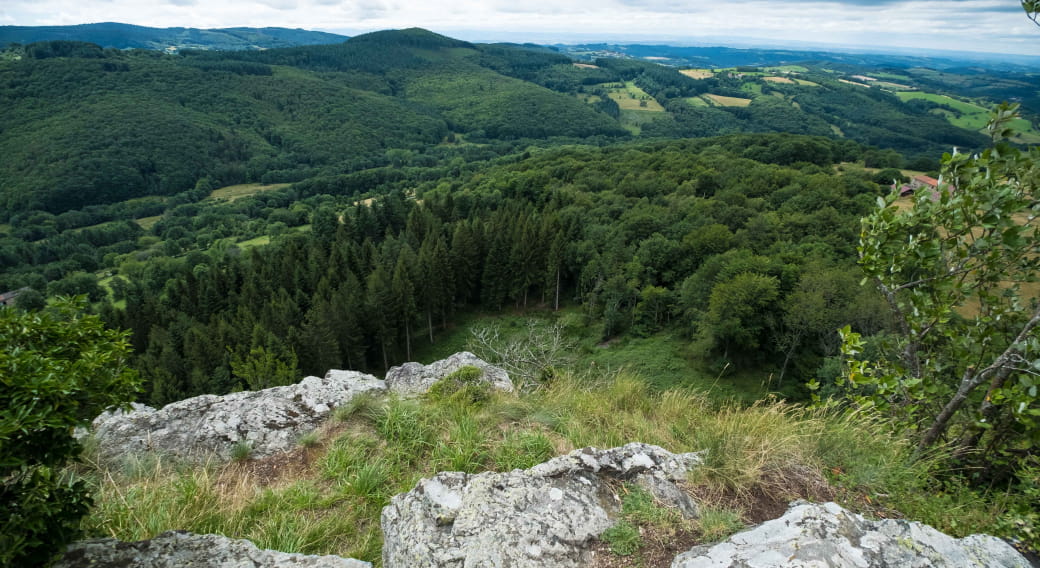The guardian of places steeped in history, rising above the Sichon Valley, the Saint-Vincent rock is one of the most typical natural sites in the Montagne Bourbonnaise. It offers a remarkable panoramic view.
Millions of years ago, when the sea covered the Massif Central, lava emerged from a fissure to form a flow. This lava is called the "green horn". When the sea retreated, plate tectonics raised this "green horn", which has now become the Saint-Vincent rock. Its highest point is 925 m.
It owes its name to the chapel, no longer standing, dedicated to Saint-Vincent Ferrier (1350-1419), a Spanish Dominican monk.
In the Middle Ages, the Château de Pyramont was built on top of the rock, on the remains of an ancient Carolingian fortress. This castle controlled the upper Sichon valley and monitored traffic between the Bourbonnais, Forez and Auvergne regions. The castle was abandoned in the 16th century, and only a few ruins remain. An orientation table gives you an idea of the landscape before you.
A statue of the Virgin and Child, "Notre Dame de là-haut", was reinstalled in 2012.
The summit of the imposing volcanic mass of Rocher Saint-Vincent (private property) is made up of two pitons separated by a grassy esplanade.
The Rocher Saint-Vincent is actually made up of several rocks:
- rocher Principal
- Pommerie rock
- rocher de l'Enceinte
- Greffier rock
- rocher de la Ligue
- Castor
- Pollux
- la Dalle Grise
- la Proue
- le Petit Rocher
and, a little further away :
- la Pierre Fendue
The raven (a protected species) nests on the main rock, and it would be very unwise to disturb it, especially from January to June during the nesting season.
To take full advantage of this natural environment, hiking boots are essential, as are binoculars and/or a camera.
Periode d‘ouverture : Ouvert toute l‘année
All year round.










